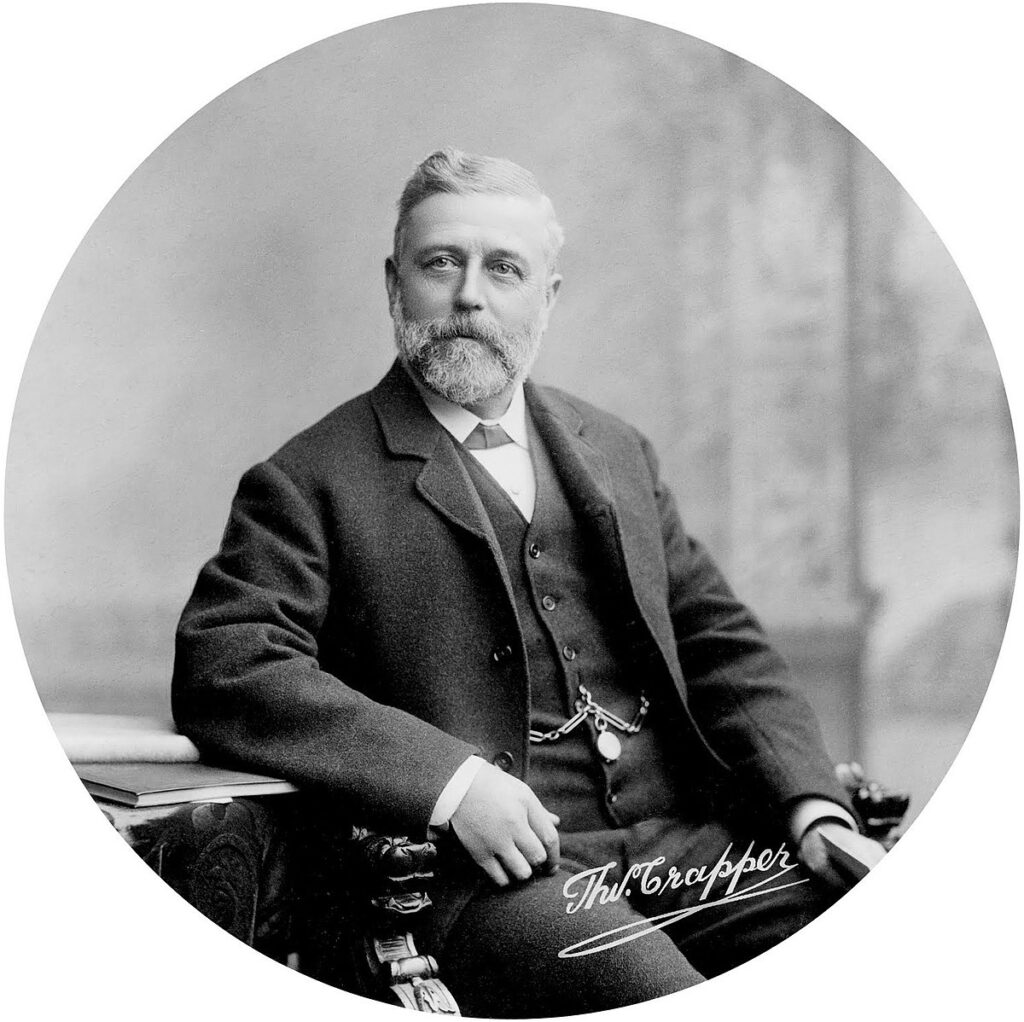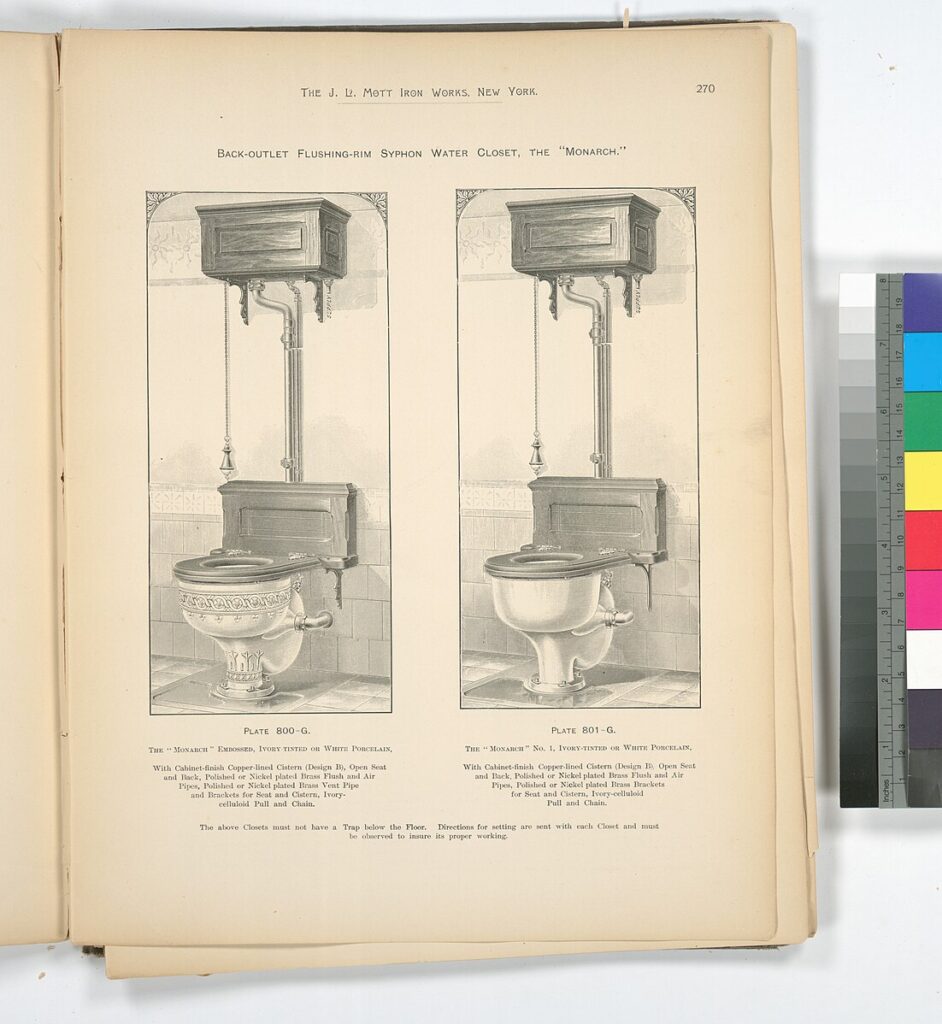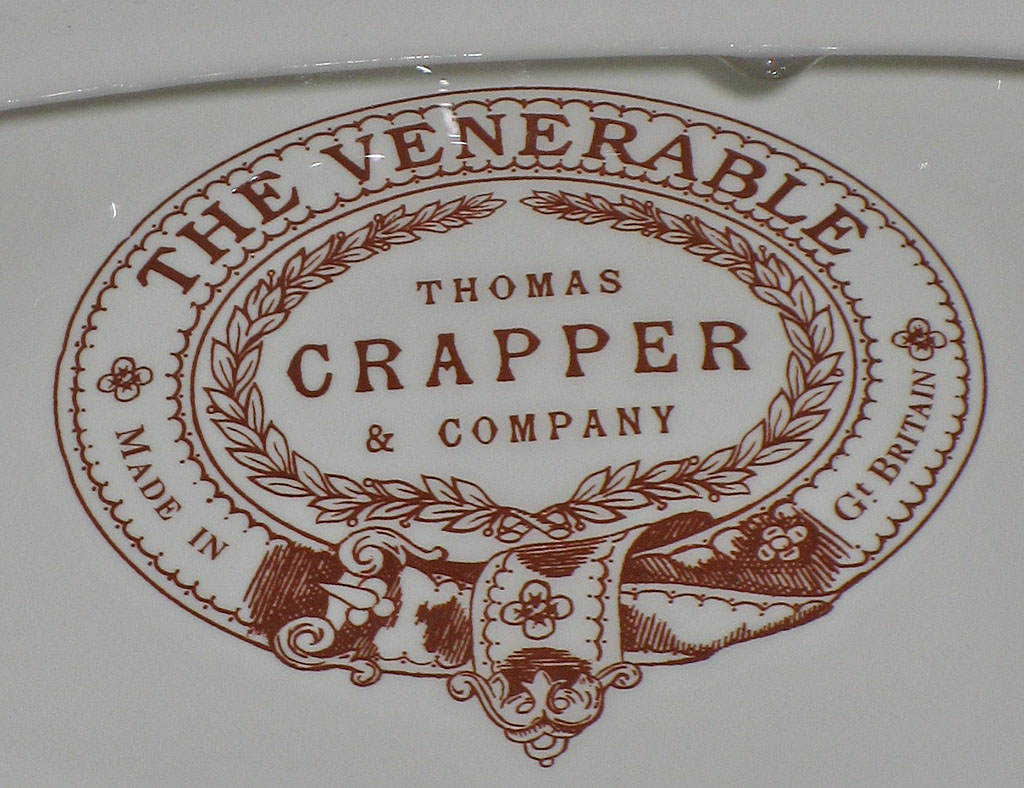Did you ever wonder where the word “crap” came from?
It’s hard to determine the real etymology of the word, but some believe it came from a man named Thomas Crapper. Being named after crap isn’t very flattering but if the speculations are true, there are very good and interesting reasons why Thomas Crapper became associated with excrement.
Crapper improved bathroom mechanisms that are widely used in today’s modern bathrooms. Through his company, Crapper introduced water closet improvements that offered cleaner and more convenient ways to go to the bathroom.
It would also be quite apt if “crap” was named after him since many of his achievements were overstated which is not entirely his fault.
So, who exactly was Thomas Crapper?

Portrait of Thomas Crapper, popularizer of the flush toilet, 19th century
Thomas Crapper’s Early Life
Little is known about Crapper’s early life. According to accounts, he was born sometime in 1836 in Thorne, West Riding of Yorkshire. However, records show that he was baptized on September 28, 1836. At that time, it was common for English parishes to register babies’ baptism dates instead of their birth dates.
Crapper’s father, a sailor, was named Charles. When he was 17, Crapper worked as an apprentice to his master plumber brother George. He spent three years as a journeyman plumber.
The fictitious biography of the plumber is even more exciting. According to the book, Flushed With Pride: The Story of Thomas Crapper, he became a plumber at the young age of 11.
He reportedly walked from Yorkshire to London to become a plumber. The book also said that Crapper was a sanitary engineer who invented the modern toilet. It specifically mentioned that he was the man who invented the flush toilet.
Unfortunately, the book was a satire that included a highly embellished biography of Crapper. He did go to London, specifically Chelsea, to become a plumber but started apprenticing for his older brother at the age of 17.
Crapper also didn’t invent the modern toilet but he definitely contributed to making toilets better.
A Self-Made Man
From apprentice to journeyman plumber, Crapper eventually started his own company in 1861. He named it after him: Thomas Crapper & Co.’s Specialties.
What were the products and services of the company?
- Pedestal Wash-Down Closet
- Valve Closet
- Water Waste Preventer
His company was located on Marlborough Road in Chelsea.
The pedestal wash-down closet caused contention among different water closet companies. The mechanism was purportedly invented by Crapper.
The company, Original Bathrooms, disputed the claim by saying that it was Frederick Humpherson who invented it. Humpherson was the son of the founder of Original Bathrooms. He also worked for Crapper before the family started its own water closet business.
Even if Crapper didn’t invent the pedestal wash-down closet, it’s undeniable that he made a name for himself in the industry—so much so that he received royal warrants for plumbing projects.
Royal Warrant for Bathrooms
To the uninformed, a royal warrant, formally known as the Royal Warrant of Appointment, is a mark of recognition given to an individual or company that regularly supplies products and services to the royal household.
Sometime in the 1880s, then-Prince Albert and later King Edward VII, issued the royal warrant for Thomas Crapper & Co. to provide plumbing services and around 30 bathrooms for the Sandringham House. The home is currently owned by King Charles but it was purchased for Prince Albert/King Edward VII in 1862.
Royal warrants for Crapper’s services continued during the reign of King George V or King Edward VII’s son. The king issued more warrants for other royal household plumbing and sanitation projects.
King George V’s royal warrants were among the last projects that Crapper handled before retiring in 1904. Thomas Crapper & Co. was passed on to his nephew, George, and a business partner named Robert Marr Wharam.

Contributions To Plumbing and Sanitation
While many inventions were wrongly attributed to Crapper, he clearly made important contributions to toilets and sanitation. He held nine plumbing- and toilet-related patents, including three water closet improvements.
One of these consisted of a floating ballcock, a system for filling water tanks to prevent backflow and overflow. Crapper also invented the U-bend plumbing trap in 1880 as a way to improve the older S-bend version.
Thomas Crapper & Co. reportedly opened the first bathroom showroom in 1870. It was a success as people got a glimpse of mass-market modern toilets which made them more affordable.
Many toilets carry the Thomas Crapper & Co. name and logo so it’s no wonder that the British sometimes refer to the toilet as the crapper.

In recognition of his contributions to toilet and sanitation, the Inventors Digest designated January 27, 1910, as Thomas Crapper Day. It was the day he died. He was buried in Elmers End Cemetery.
Thomas Crapper & Co. also manufactured manhole covers. Interestingly, some manhole covers around Westminster Abbey have become tourist attractions because of Crapper’s history. The manhole covers serve as reminders of how Crapper improved and modernized the plumbing of the ancient building.
Does Thomas Crapper & Co. Still Exist?
The current Thomas Crapper & Co. sells luxury toilets and basins, which are recreations of the ones Crapper used to make. However, no one from the Crapper bloodline owns the company.
There are no clear records of Crapper’s heirs. It was established that he married but even his wife’s name was inconsistent.
Some report that Crapper had a son who died at the age of one and was, therefore, unable to inherit the company. Another report claimed that Crapper and his wife had 10 children.
Whatever the truth is, Crapper passed on the company to his nephew and Wharam. Wharam’s son, Robert G. Wharam, sold the company to a rival named John Bolding & Sons in 1966. Just three years later, John Bolding & Sons went into liquidation.
Simon Kirby, a historian and avid collector of antique bathroom fittings, got hold of the company and relaunched it as a manufacturer of luxury bathroom fittings that mirror Crapper’s original products.
Crapper’s Biggest Contribution
Thomas Crapper did not invent the flushing-toilet system and the word “crap” wasn’t named after him. However, he advocated for sanitary plumbing, which offered safety, security, and cleanliness in the household.
Crapper’s improvements in plumbing and sanitation also allowed plumbing mechanisms to be installed inside people’s homes rather than outside. So, the next time you go to the crapper, you may want to thank Thomas Crapper for the convenience.

